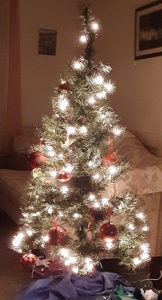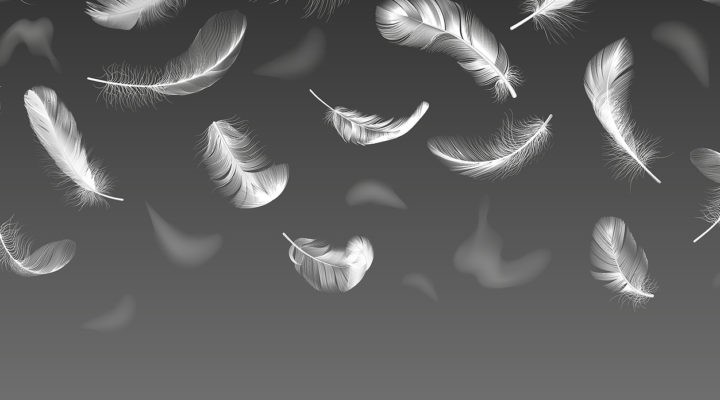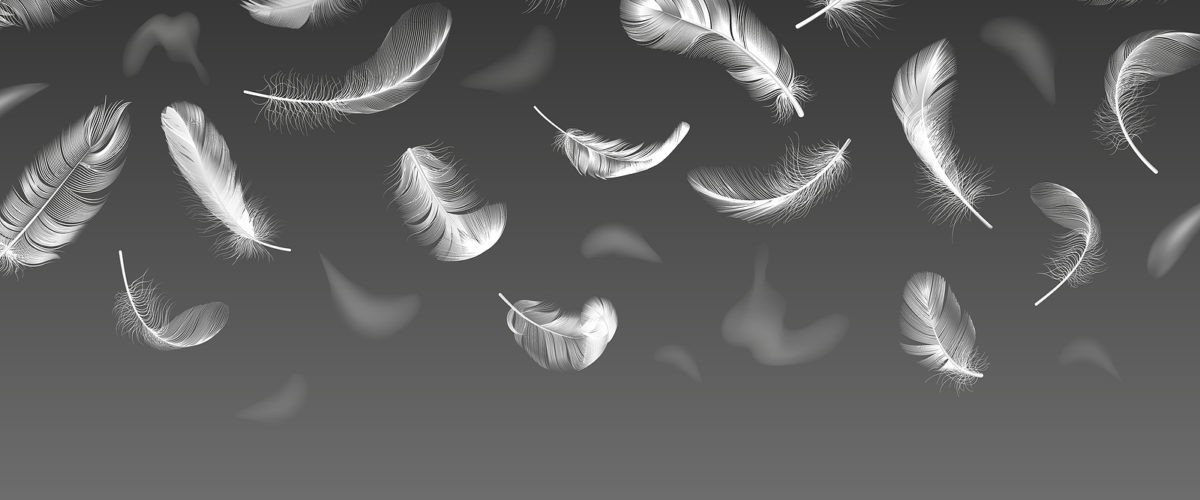I put up my 4-foot Christmas tree a few days ago. It took about 15 minutes from box to display.
I slid one skinny pole into the other, draped two or three boxes of ornaments over the stiff branches and plugged the thing in (tiny lights are already attached). I hung three stockings from the fireplace mantle and voila, my holiday decorating was done.
 It’s a far cry from the lengthy, quasi-military operation Christmas decorating used to be when my wife was alive and the kids were at home. First, she directed the downloading of hundreds — well, maybe tens — of boxes of stuff from the attic, which was exhausting in itself. And dangerous: One wrong move on the rickety attic ladder could result in a fatal deluge of Christmas baubles and bulbs.
It’s a far cry from the lengthy, quasi-military operation Christmas decorating used to be when my wife was alive and the kids were at home. First, she directed the downloading of hundreds — well, maybe tens — of boxes of stuff from the attic, which was exhausting in itself. And dangerous: One wrong move on the rickety attic ladder could result in a fatal deluge of Christmas baubles and bulbs.
That was only the beginning. Then would begin the dusting of the boxes, the raising of the full-size tree (also fake, but full-size), the excruciating untangling of giant hairballs of lights, the careful selection and hanging of ornaments, the subsequent rearrangement of said ornaments, and so on — all under the exacting command of General Mom. Then we would all collapse on the couch and watch “A Christmas Story” or “It’s a Wonderful Life” for the umpteenth time, another family tradition. Those are some of my favorite memories.
Now it’s just me, until the kids come over for Christmas itself. I like to keep it low-key. Holidays, especially Christmas, can be hard if you strive to recreate old times when a beloved person from those times isn’t around anymore. I’d rather sit, drink coffee and watch the little lights twinkle on my 4-foot tree.
“Holidays, especially Christmas, can be hard if you strive to recreate old times when a beloved person from those times isn’t around anymore.”
I bought the 4-footer from Walmart just before my wife’s last Christmas, when she was too weak to direct the quasi-military operation anymore. The battalions of boxes haven’t come out of the attic since, and probably never will, unless I have grandkids one of these days. Maybe we’ll create some new traditions then.
God, what a nightmare year it’s been: COVID-19, leaving a national path of death and destruction, still spreading its dark arms like the Ghost of Christmas Future. The endless election from hell was decided a month ago, but the crazed loser keeps spewing lies and flailing around in the White House. Racism, riots, hatred and division. Millions out of work. Opening, closing, re-opening, closing again.
On the personal front, I’m still dating off and on. I’m looking for a good woman, because I don’t like being alone. Almost fell in love with one earlier this year. She didn’t, so I’m back to looking. Beginnings and endings. You learn that’s what life is about as you get older. More endings as time goes on, but that makes the beginnings sweeter.
There’s a bird that’s been perching atop a wrought-iron chair on my back patio for months now. Every afternoon, like clockwork, it launches from the chair and collides with the windowpanes of my French doors. It flutters back to the chair and launches again, bashing into the window. I try to shoo it away, but it always returns. I researched this phenomenon and learned that birds often fly into windows because they see a reflection of the sky and fly toward it.
To be honest, I think my bird is dumb as a rock. But I admire its persistence. That’s what you need to keep going. Persistence, and hope. The bird also reminds me of Emily Dickinson’s famous lines:
Hope is the thing with feathers,
That perches in the soul,
And sings the tune without the words,
And never stops at all …
If you stop hoping, regardless of how many times you crash into windows, it’s all over.
The first candle of Advent symbolizes hope, shining in the darkness of this world in expectation of the coming of the Lord. In earlier centuries, before the celebration of Christmas became the lumbering behemoth it is today, Advent on the church calendar stressed yearning for Second Coming as much as the first.
“The Latin word adventus was the translation of the Greek parousia — a word used for both the coming of Christ in human flesh and his Second Coming,” writes Ryan Reeves, associate professor of historical theology at Gordon-Conwell Theological Seminary. “For the first two weeks of Advent, the church would reflect on the Second Coming. Disciples would chasten their hearts, confess sins, and spend time hoping for the quick coming of the Lord. The last two weeks of Advent would then transition to focus on the first parousia, Christ in the manger.”
“To hope, as the Hebrew Psalms make so clear, also means to wait, sometimes in desperation.”
We should recapture that twin focus in our day — hope for Christ’s birth to bring light into our darkness, and hope for Christ’s return, which will end darkness for all time.
 But to hope, as the Hebrew Psalms make so clear, also means to wait, sometimes in desperation. “As the deer pants for the water brooks, so my soul pants for thee, O God,” cries the psalmist. “Why are you in despair, O my soul? And why have you become disturbed within me. Hope in (wait for) God, for I shall again praise him for the help of his presence” (Psalm 42: 1,5 NASB).
But to hope, as the Hebrew Psalms make so clear, also means to wait, sometimes in desperation. “As the deer pants for the water brooks, so my soul pants for thee, O God,” cries the psalmist. “Why are you in despair, O my soul? And why have you become disturbed within me. Hope in (wait for) God, for I shall again praise him for the help of his presence” (Psalm 42: 1,5 NASB).
That is the thing with feathers. It perches in the soul and sings without stopping, even in the blackest night. So I will sit beside my 4-foot Christmas tree, in the close and holy darkness, and wait.
Erich Bridges, a Baptist journalist for more than 40 years, retired in 2016 as global correspondent for the Southern Baptist Convention’s International Mission Board. He lives in Richmond, Va.


